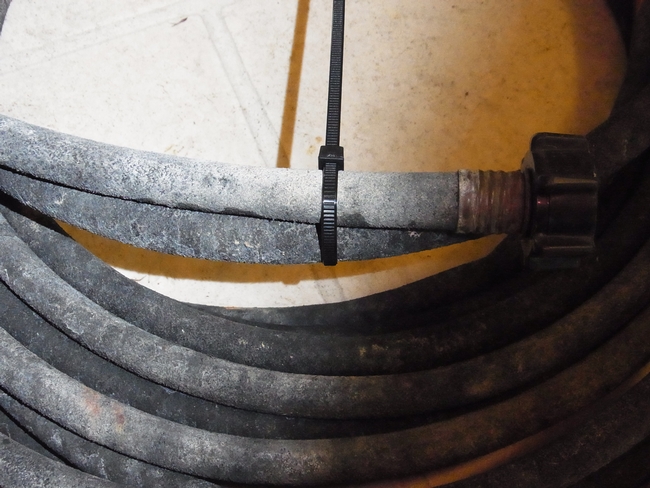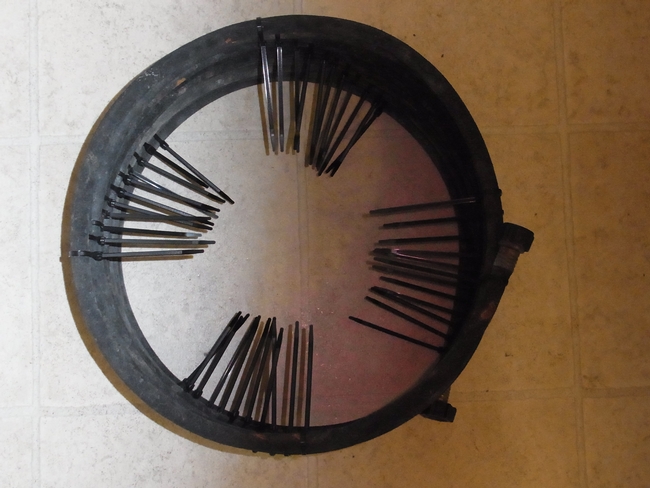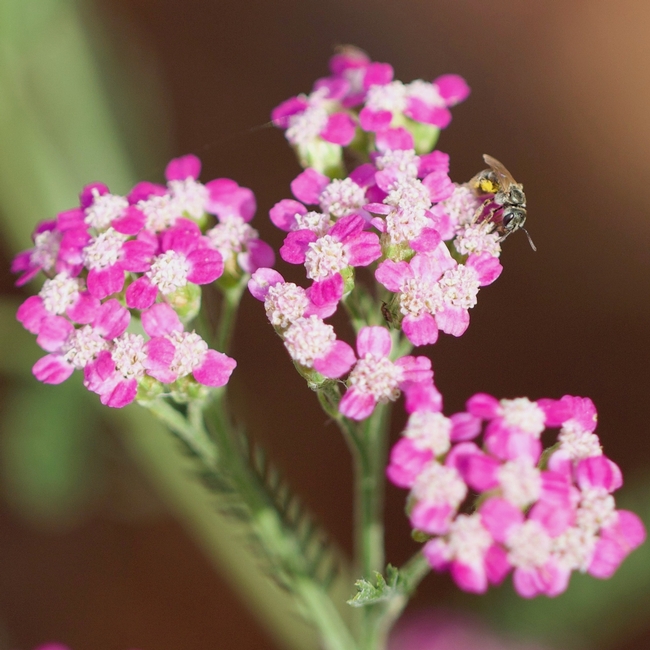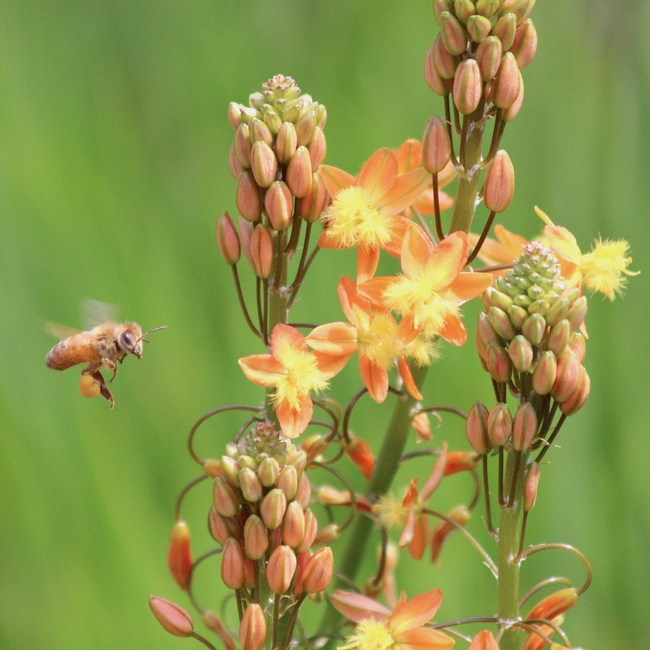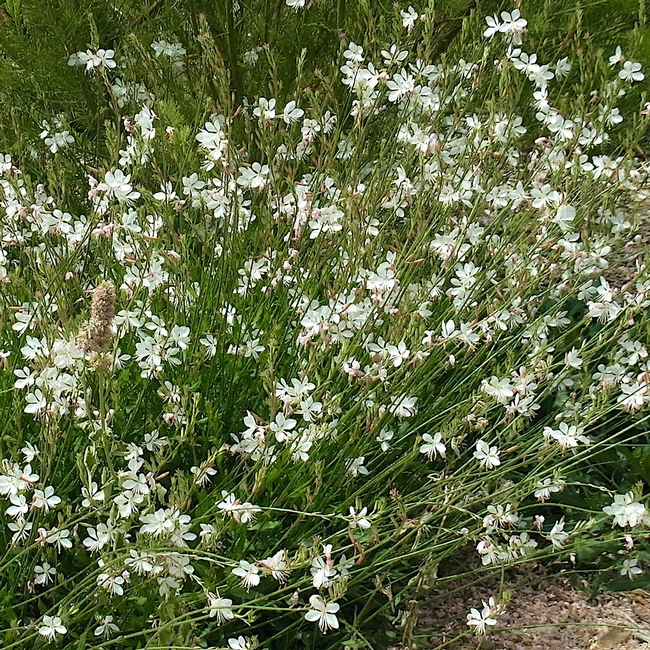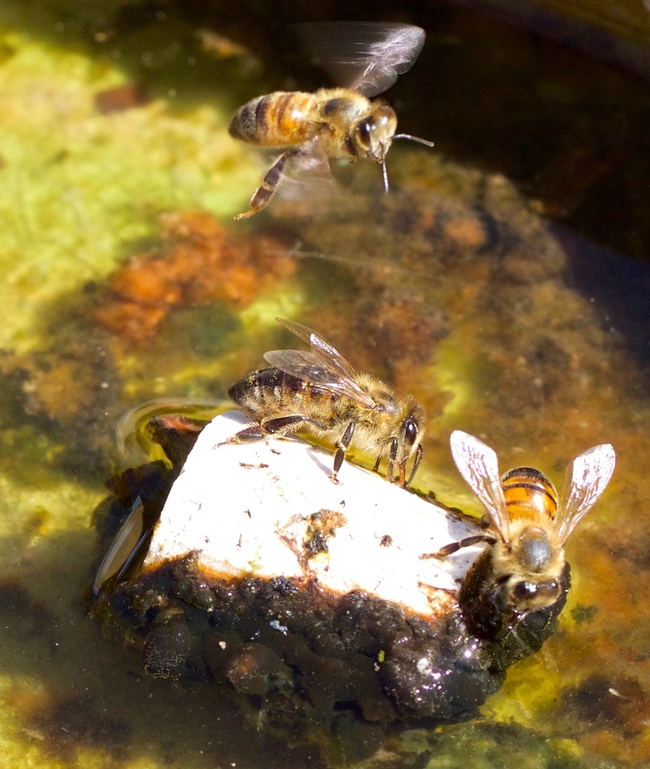- Author: Christine Casey
Bee gardeners are good stewards of the environment, which includes making the most of our precious water supplies in the garden. But are you getting the most Bees Per Gallon? We've recently completed a five-year study to evaluate the bee-attractiveness of common northern California landscape plants. Funded by the USDA-NIFA-SCRI, this work was part of a US-wide project to investigate how the horticulture industry can support bees. At UC Davis, we evaluated low- and medium-water plants that do well in northern California.
While all the plants we tested were bee-attractive to varying degrees, here are the ten most-attractive plants with WUCOLS ratings of L or VL in the Central Valley region. These are the plants that will help your garden support the most bees with the least water -- the most Bees Per Gallon!
This list is not intended to be a comprehensive recommendation. There are other great low-water bee plants (here's a list on the Haven's website); the most detailed recommendation for California bee plants of all water needs is in California Bees and Blooms by Heyday Press.
Yarrow (Achillea millefolium 'Moonshine' and 'Island Pink')
Full sun
WUCOLS rating for the Central Valley = L
Blooms summer and fall
Grows approximately 2ft h x 2ft w
Sunset zones 1-24
Cape balsam (Bulbine frutescens)
Full sun
WUCOLS rating for the Central Valley = L
Blooms nearly year-round
Grows approximately 2ft h x 3ft w
Sunset zones 8, 9, 12-24
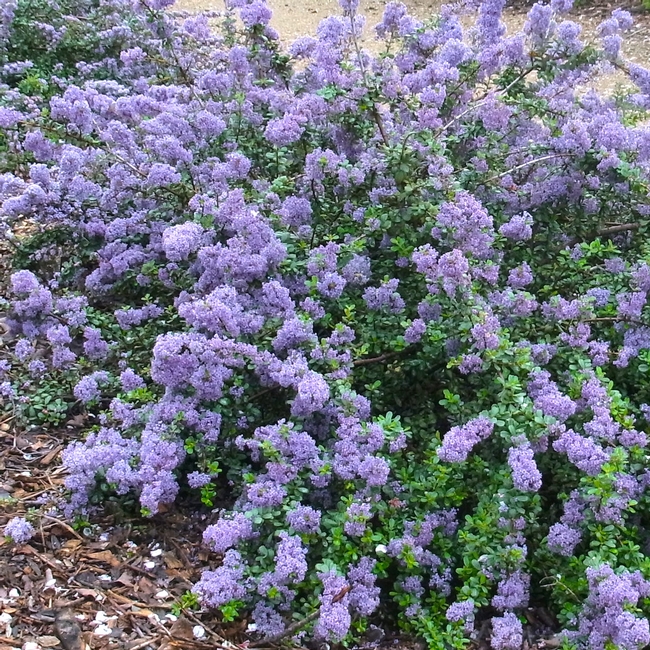
Full sun
WUCOLS rating for the Central Valley = L
Blooms late winter
Grows approximately 1ft h x 4ft w
Sunset zones 5-9,14-24
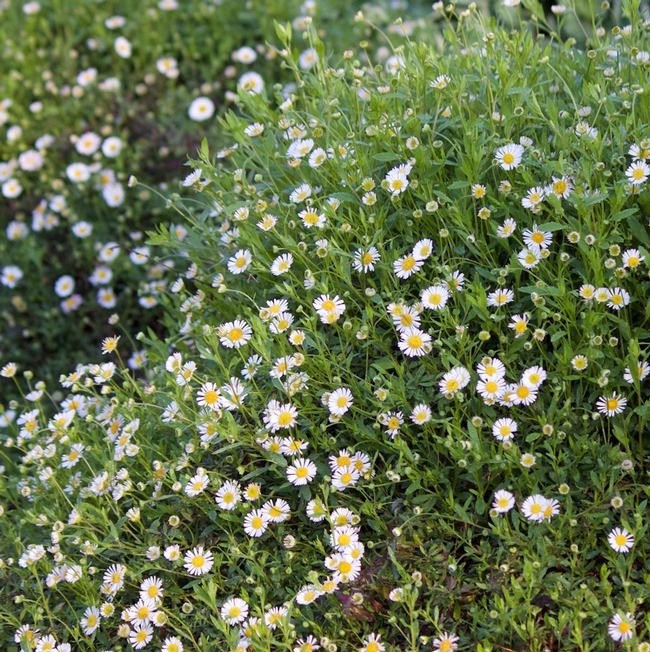
Full sun
WUCOLS rating for the Central Valley = L
Blooms nearly year-round
Grows approximately 3ft h x 3ft w
Sunset zones 8, 9, 12-24
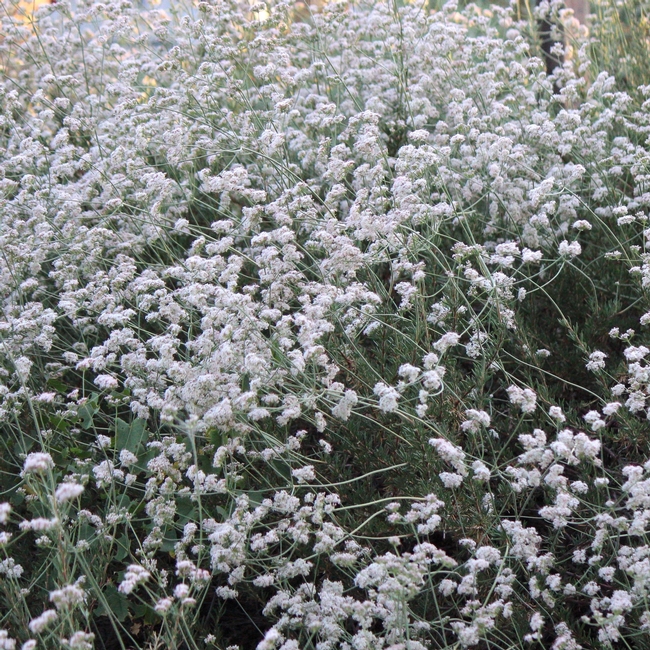
Full sun
WUCOLS rating for the Central Valley = VL
Blooms summer and fall
Grows approximately 3ft h x 3ft w
Sunset zones 7, 9, 12-24
Full sun
WUCOLS rating for the Central Valley = L
Blooms summer
Grows approximately 2ft h x 2ft w
Sunset zones 2B-24
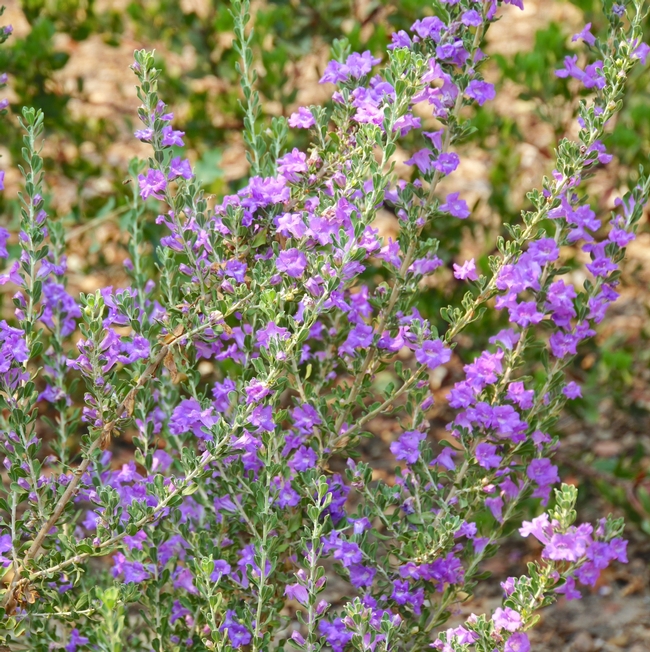
Full sun
WUCOLS rating for the Central Valley = L
Blooms late summer
Grows approximately 4ft h x 4ft w to 8ft h x 8ft w depending on variety
Sunset zones 7-24
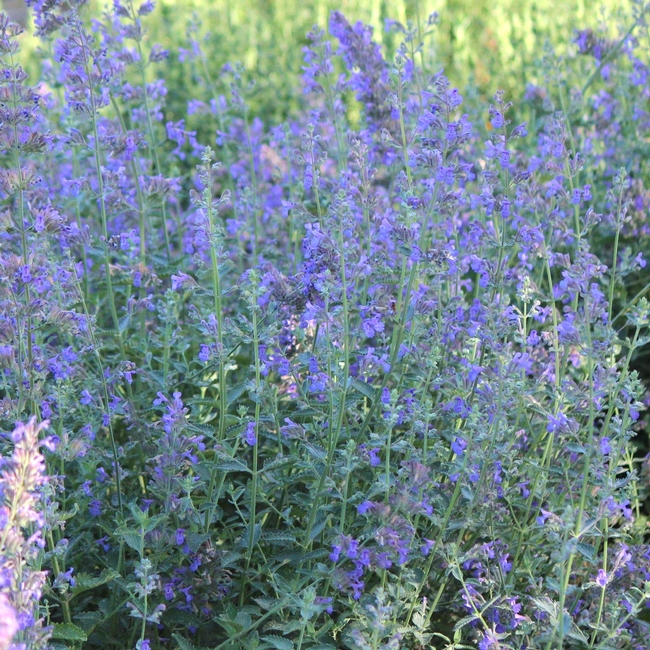
Full sun
WUCOLS rating for the Central Valley = L
Blooms summer and fall
Grows approximately 2ft h x 2ft w
Sunset zones 1-24
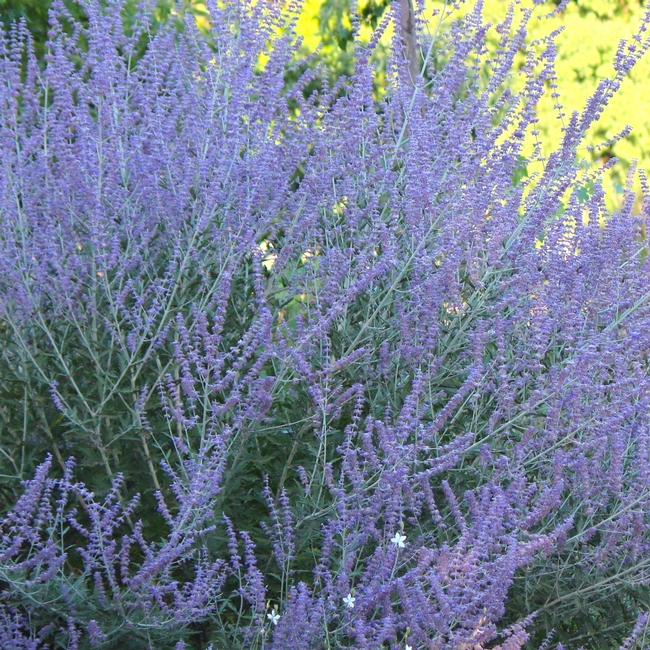
Full sun
WUCOLS rating for the Central Valley = L
Blooms summer and fall
Grows approximately 2ft h x 2ft w to 6ft h x 6ft w depending on variety
Sunset zones 2-24
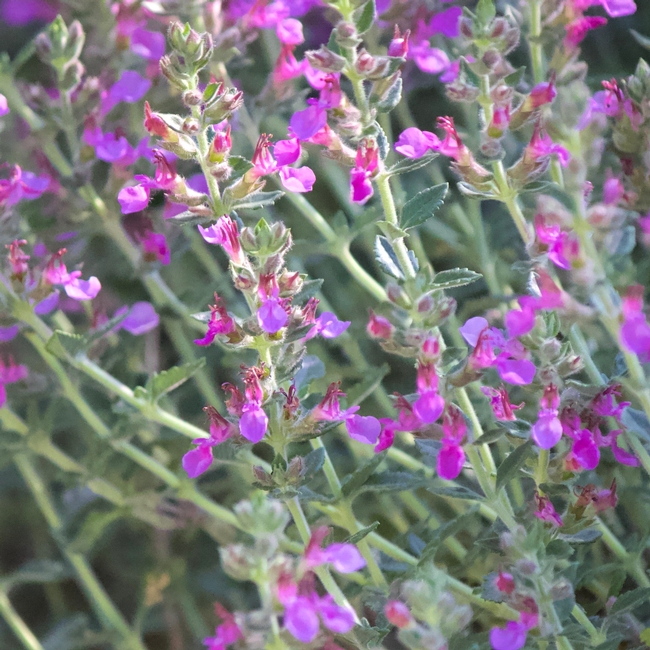
Full sun
WUCOLS rating for the Central Valley = L
Blooms summer
Grows approximately 1ft h x 2ft w
Sunset zones 2-24
- Author: Christine Casey
Like all animals, bees need food, water, and shelter. Most insects get all the water they need from their food: think of a caterpillar that feeds on plant leaves, which are mostly water. However, the pollen and nectar that constitute a bee's diet don't contain much moisture, so bees must have a water source. As the weather warms and foraging activity picks up, honey bees will start looking for water as well as pollen and nectar.
Honey bees are good learners, and once they find a water supply they will return regularly. Water is so important that foragers will do the waggle dance to direct hive mates to water sources just as they will for flowers. So to direct bees to the water you want them to use, it's important to provide attractive sources early in the year (i.e. now!) so they will learn these rather than the places you don't want them, such as a swimming pool.
So just what is a good water source? Here are some guidelines:
Accessible to bees
Bees can't swim! They must be able to stand where it's dry and drink. Good systems include shallow bird baths or pot bottoms filled with water and pebbles or corks. These allow the bees to stand and drink; they'll generally dry out too quickly for mosquitoes to be an issue. If your water source is a pond, Bacillus thuringiensis israelensis may be used for mosquito control as it's harmless to bees. At the Haven, we create 'pots' using coiled soaker hoses. Connected to a timer-controlled water supply, these are a great way to efficiently deliver water in bee-sized droplets. I provided construction details for this in a previous post.
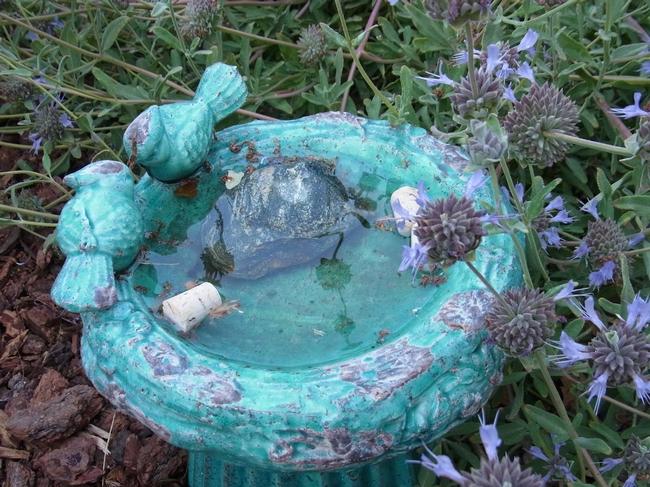
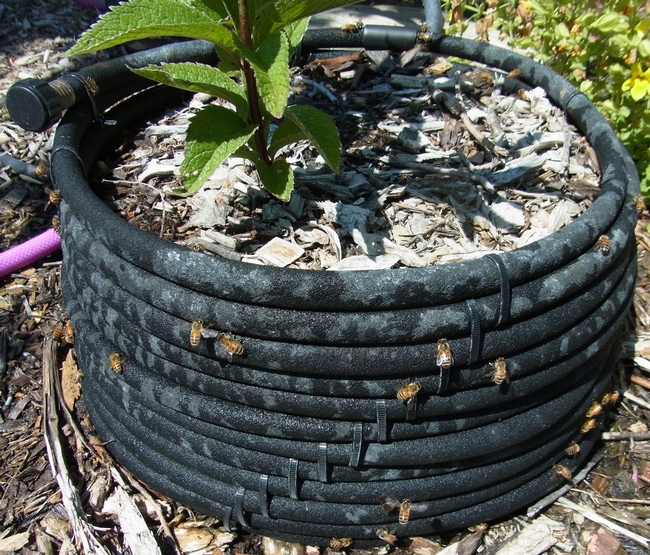
Nutritious for bees
Water needs to be nutritious? Surely bees need the same fresh, clean water that you or I might want? It turns out that water is an important route for bees to obtain essential nutrients. Butler (J. Experimental Biology, 1940, (17):253-261) coined the term 'dirty water' to refer to water containing nutrients. Probably because in the agricultural areas of Great Britain where he observed bees, they frequented areas we might consider undesirable. As he stated in his paper,
"It is well known that honeybees tend to collect water from many undesirable sources, such as rain-water gutters that are choked with decaying organic matter, on the puddles that form on the top of cow dung and sewage effluent, rather than from a source of clean water provided in the apiary for their use."
He performed chemical analysis of the water at these sites and found it to be high in various nutrients that were leaching from the organic material. Water with high sodium chloride (yes, table salt) seemed to be the source preferred by bees. A previous study (Hertz, Z. Vergl. Physiol., 1935, (21):463) suggested that bees used olfactory cues to located these preferred sources. To test this, Butler washed preferred water using activated charcoal and found that bees were unable to distinguish between the washed preferred water and distilled water. This confirmed Hertz' theory that odor cues are used to locate mineral-rich water. The take home from this? Don't place your water source near highly scented plants, and let leaves and algae sit in your bee water source.
More recent work by Bonoan et al. (Ecol. Entomol., 2017, (42):195-201) looked at drinking water as a source of micronutrients for bees. Honey bees were allowed to forage freely in a meadow and were provided water sources with varying chemical components. As with Butler, during much of the year they found that bees had a strong preference for sodium-rich water, regardless of plant diet. In the fall, however, when pollen is scarce, they showed a preference for water sources containing calcium, magnesium, and potassium, all of which are found in pollen. This demonstrated that honey bees have the ability to switch water sources to compensate for dietary nutrient deficiencies.
Plants as water sources
I mentioned earlier that the plant products consumed by bees -- pollen and nectar -- aren't good sources of water. Plants can be an indirect source, though. In a garden with overhead irrigation or large amounts of dew, water can sit for several hours on leaves that are covered with dense hairs. I've shown two examples from the Haven below. Since overhead watering can promote disease and waste water, try giving plants like these a quick wash from the hose so they'll do double duty as nectar and water sources.
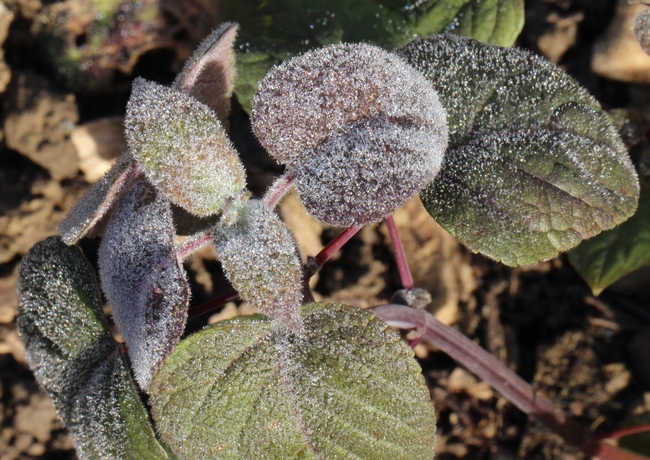
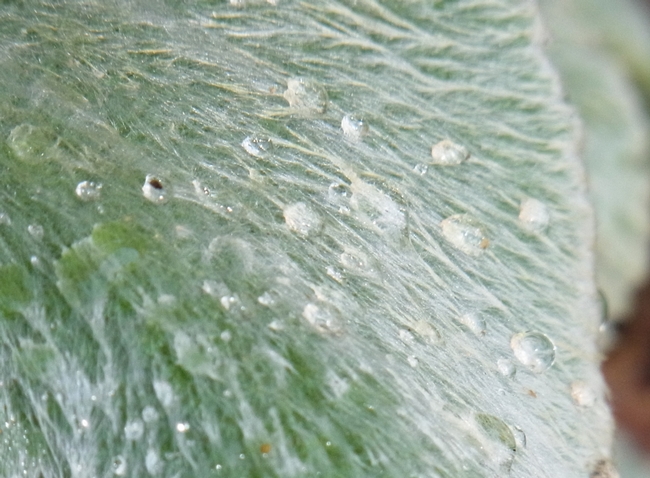
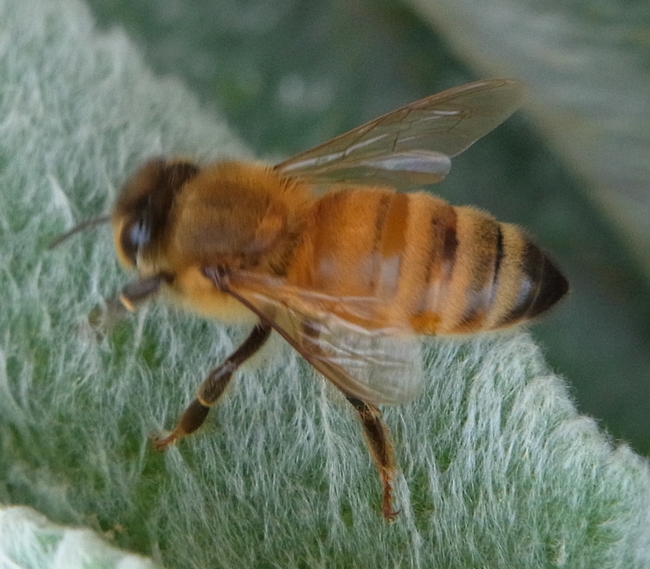
- Author: Christine Casey
Many insects can obtain the water they need from their food. Bees, however, need to drink water. Honey bees use water to make honey and to cool the hive.
As the weather heats up, I thought I'd review some ways to provide water for bees in the garden. This is especially important in this drought year, as some typical water sources such as leaking faucets may not be available. This is what commercial beekeepers do; their “bee board” is just a fancy name for a board leaning underneath a slowly dripping faucet. This can be recreated in a more water-conserving way by placing a board under the faucet of a rain barrel. 

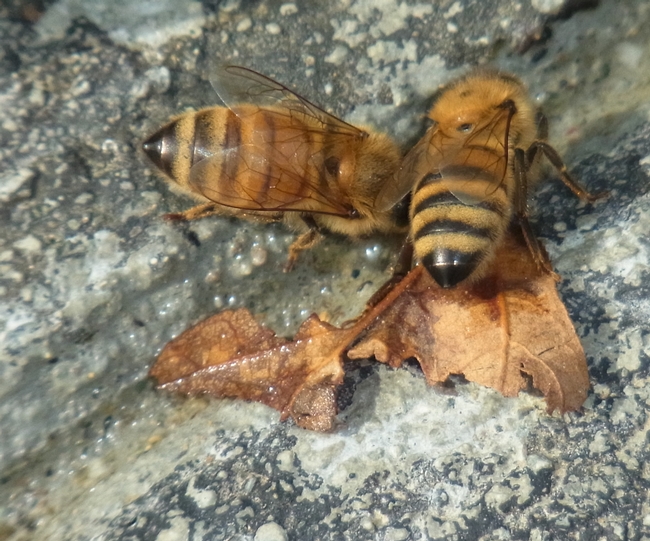
This year I've added a water source to the garden made from old soaker hoses. 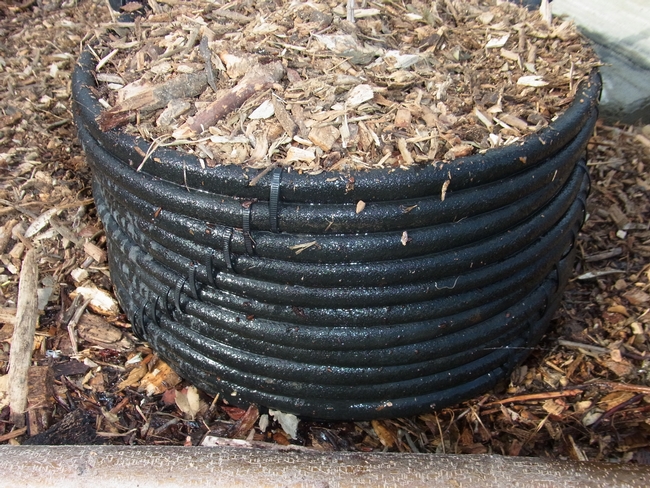
Here's how it's done:
